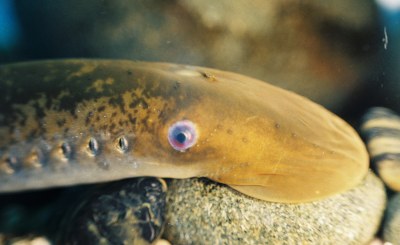-
South Africa: Graffiti Threatens Precious Evidence of Ancient Life
The Conversation Africa, 31 March 2021
The rocky outcrops that dot much of South Africa's coastline contain hidden treasure: the cemented remains of the dune and beach surfaces that existed hundreds of thousands of… Read more »
-
South Africa: Capenature Tries to Solve the Mystery of the Dyer Island Fossilised Elephant Teeth
Daily Maverick, 5 April 2021
While on a routine trip to Dyer Island off the Western Cape coast, Andrae Marais, the CapeNature conservation manager at Walker Bay Nature Reserve, spotted what appeared to be… Read more »
-
South Africa: Fossil Lamprey Larvae Overturn Assumptions About Vertebrate Origins
The Conversation Africa, 10 March 2021
Lampreys are an extremely bizarre order of fishes. Together with their cousins, the hagfish, they are the only living group of vertebrates branching from the family tree of animals… Read more »
Graffiti Threatens Proof of Ancient Life On South Africa's Coast
Surfaces like rocky outcrops that dot much of South Africa's coastline are of profound scientific, cultural, heritage, environmental, and aesthetic importance. These cemented remains, or aeolianites, and the tracksites they contain, provide a snapshot of the Pleistocene Epoch, which started around 2.6 million years ago and lasted until about 11,700 years ago. Unfortunately, they are threatened by graffiti. Their fairly soft, friable nature means that with nothing more than a hammer and a chisel, names and other images can be etched into them. That poses a tremendous risk to the underlying scientific information contained in these rocks' surfaces, writes Charles Helm for The Conversation.
InFocus
-
The "grey skull" fossil, which has been in the collections of the University of the Witwatersrand's Evolutionary Studies Institute since 1978, has been identified not only as a new ... Read more »
-
Professor Ron Clarke from the Evolutionary Studies Institute at the University of the Witwatersrand has unveiled 'Little Foot', the country's "oldest, virtually complete fossil ... Read more »

Graffiti obscures beautiful curved invertebrate traces on a rock surface in South Africa.




